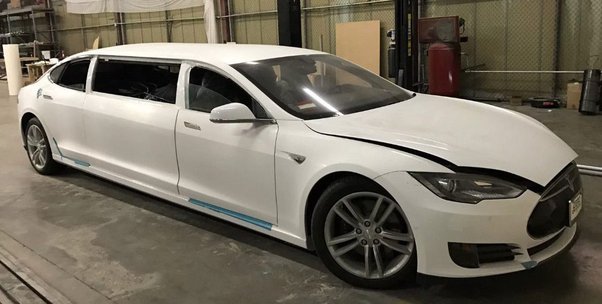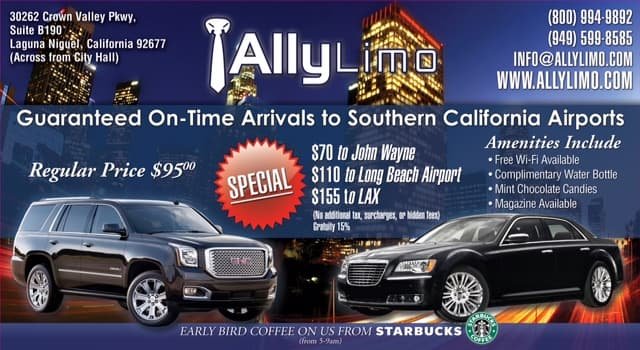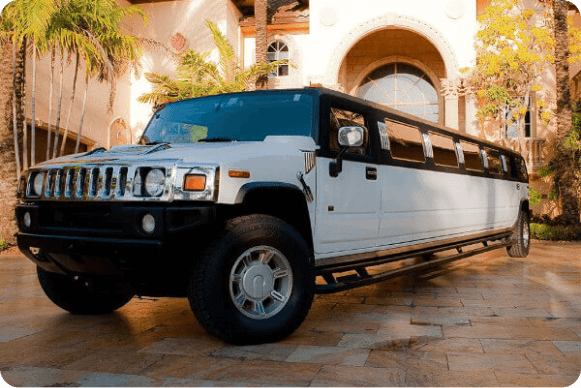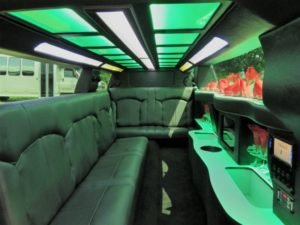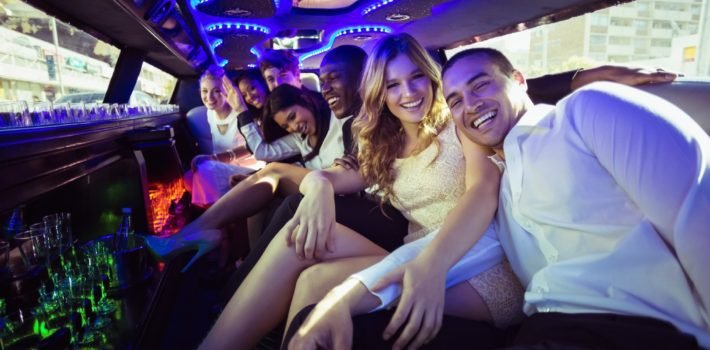Have you ever wondered why Tesla, known for its cutting-edge electric vehicles, has yet to enter the realm of limousines? Despite being at the forefront of the electric car revolution, Tesla has opted not to pursue the production of an electric limo. But why is that?
While Tesla has gained immense popularity with its high-performance electric sedans and SUVs, the decision not to build an electric limo stems from various factors. One significant reason is the market demand for electric limousines, which may not be as strong as it is for other Tesla vehicles. Additionally, building a limousine requires different design considerations, such as the need for larger dimensions and specialized features, which may not align with Tesla’s current product lineup. By focusing on mass-market electric vehicles, Tesla has been able to reach a wider audience and accelerate the adoption of sustainable transportation.
Electric limos are a popular choice for luxury transportation, so why hasn’t Tesla built one? While Tesla has been at the forefront of electric vehicle innovation, they haven’t ventured into the limo market. One possible reason is that the demand for electric limos is still relatively niche compared to other segments. Tesla may be focusing their efforts on mass market vehicles, like sedans and SUVs, to make a greater impact on reducing carbon emissions. However, as the electric vehicle industry continues to grow, it’s possible that Tesla may consider expanding their lineup to include a luxurious electric limo.
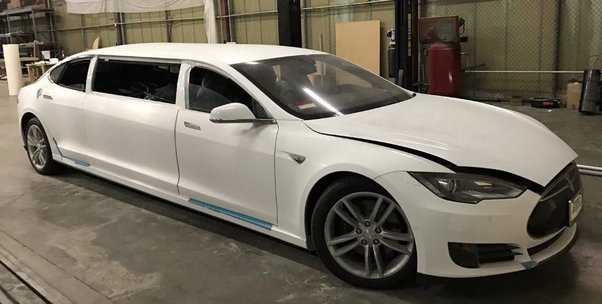
Why Doesn’t Tesla Build an Electric Limo?
Electric vehicles have gained significant popularity in recent years, with Tesla leading the charge in revolutionizing the automotive industry. Known for producing sleek and innovative electric cars, many wonder why Tesla hasn’t expanded its lineup to include an electric limousine. In this article, we will dive into the reasons behind Tesla’s decision not to build an electric limo, exploring various factors such as market demand, production challenges, and brand identity.
The Market Demand for Electric Limousines
One significant factor that influences Tesla’s decision not to build an electric limo is the market demand. Limousines, often associated with the luxury and chauffeur service industry, cater to a specific clientele in need of larger, high-end vehicles for events such as weddings, corporate functions, and airport transfers. While there is a niche market for electric limousines, it may not be substantial enough to justify the cost and resources involved in designing, manufacturing, and marketing these vehicles.
Although the environmental and sustainability benefits of electric limos are evident, market research suggests that the demand for electric luxury vehicles is currently limited compared to the broader electric car market. Tesla’s focus on producing affordable, high-performance electric vehicles with mass appeal aligns with its mission of accelerating the world’s transition to sustainable transportation. Thus, the company may prioritize investing in models that have a more significant impact on reducing carbon emissions and reaching a wider consumer base.
The Challenges of Manufacturing Electric Limousines
Designing and manufacturing an electric limousine comes with its unique set of challenges. Limousines are typically larger and heavier than standard electric cars, requiring more significant battery capacity to achieve adequate range. Building an electric limo with the performance, range, and safety standards expected of a Tesla vehicle would require extensive research and development, as well as investment in advanced battery technology.
Furthermore, the production process for electric limousines might be more complex and costly due to their customizations and unique features. Limos often include luxurious interiors, advanced entertainment systems, and other amenities that require meticulous attention to detail. Tesla’s production capacity and resources may be better allocated to optimizing and expanding their existing vehicle models that cater to a broader customer base.
The Importance of Brand Identity
Tesla has built a unique brand identity around innovative, high-performance electric vehicles that cater to environmentally conscious consumers. The company has positioned itself as a disruptor in the industry, challenging traditional norms and pushing the boundaries of what is possible with electric cars. By focusing on smaller, sporty, and affordable models, Tesla has successfully differentiated itself from other luxury car manufacturers.
Building an electric limo might dilute Tesla’s brand image and may not align with its target market. While a Tesla limousine could undoubtedly showcase the company’s engineering prowess and technological advancements, it may be seen as a deviation from the brand’s core values and mission. Tesla’s continuous drive to make electric vehicles more accessible and widespread could be compromised by diverting resources toward the development and production of a niche, exclusive vehicle like a limousine.
The Future Possibilities
While Tesla currently doesn’t produce an electric limo, it’s important to remember that the automotive industry is constantly evolving. As technology advances and market demands shift, the possibility of Tesla venturing into the electric limousine market in the future cannot be ruled out. The company has proven its ability to innovate and adapt, as seen in the introduction of new models like the Cybertruck and the upcoming Tesla Semi.
As consumer preferences change and the demand for sustainable luxury vehicles potentially grows, Tesla may reassess the viability of producing an electric limousine. The company’s commitment to sustainability and its dedication to pushing the boundaries of electric vehicle technology make it well-positioned to explore new avenues in the market. Whether it’s in the form of partnerships, collaborations, or strategic acquisitions, Tesla’s future endeavors could bring about exciting possibilities for electric limousines.
The Benefits of an Electric Limousine
While Tesla’s decision not to build an electric limousine is driven by various factors, it’s essential to acknowledge the potential benefits of such a vehicle. Electric limousines, combining luxury and sustainability, could offer several advantages:
- Reduced Emissions: Electric limousines would significantly reduce greenhouse gas emissions and contribute to a cleaner environment.
- Lower Operating Costs: Electric vehicles generally have lower operating costs compared to traditional gas-powered vehicles, thanks to cheaper electricity and reduced maintenance needs.
- No Compromise on Luxury: Electric limos could provide an opulent and comfortable experience for passengers, with cutting-edge technology and spacious interiors.
- Enhanced Performance: Electric motors offer instant torque, leading to smoother acceleration and a quiet, refined ride.
While these benefits are enticing, the current market demand and other factors discussed earlier shape Tesla’s decision not to pursue the production of an electric limousine. However, as the automotive landscape evolves, it’s possible that other companies or even Tesla itself may explore this segment more extensively.
Tips for a Sustainable Luxury Transportation Industry
While Tesla explores other avenues in the automotive industry, there are several steps that can be taken to promote sustainability within the luxury transportation sector:
- Electric Vehicle Adoption: Encourage the use of electric vehicles in luxury transportation services by providing incentives for companies to transition their fleets to electric models.
- Charging Infrastructure: Continue expanding the charging infrastructure to accommodate the needs of electric limos and other luxury electric vehicles.
- Collaboration: Foster partnerships between manufacturers, luxury car rental agencies, and limousine companies to create tailor-made options for sustainable transportation.
By implementing these tips, the luxury transportation industry can contribute to a greener future, reducing its carbon footprint while delivering exceptional service and luxury to customers.
The Future of Electric Luxury Transportation
As the world moves towards a greener and more sustainable future, the demand for electric luxury transportation may increase. While Tesla has chosen not to build an electric limousine at present, other manufacturers are making strides in this market segment. Companies such as Lucid Motors, Rivian, and Mercedes-Benz are already developing electric luxury vehicles that cater to affluent consumers seeking sustainable options.
As technology continues to advance, electric limousines may become more feasible, with improved range and charging infrastructure. The growing awareness and urgency for environmentally friendly transport options are likely to drive innovation in this sector. Perhaps in the not-so-distant future, we will witness the emergence of electric limousines that combine luxury, style, and sustainability, revolutionizing the luxury transportation industry.
Summary
Tesla’s decision not to build an electric limousine is primarily influenced by market demand, production challenges, and brand identity considerations. The niche market for electric limos and the resources required to design and manufacture them make it a less viable option for Tesla at the moment. Moreover, Tesla has built a unique brand image focused on affordable, high-performance electric vehicles, which might not align with the exclusivity and customization associated with limousines.
However, as the automotive industry evolves and consumer preferences change, Tesla’s future endeavors may include ventures into the electric limousine market. The benefits of electric limousines, such as reduced emissions and lower operating costs, make them an attractive option for those seeking luxury and sustainability. Meanwhile, promoting sustainable practices within the luxury transportation industry, such as electric vehicle adoption and charging infrastructure expansion, can contribute to a greener future.
While we wait to see what the future holds, it’s essential to recognize the transformative power of innovation and the potential for electric luxury transportation to revolutionize the industry, providing opulence and environmental responsibility in equal measure.
Key Takeaways: Why Doesn’t Tesla Build an Electric Limo?
- Tesla focuses on producing electric vehicles with mass-market appeal.
- The demand for electric limos is relatively low.
- Limos require significant customization and amenities, which may not align with Tesla’s production strategy.
- Tesla prioritizes range and efficiency, which can be challenging to achieve in a larger, heavier vehicle like a limo.
- Tesla’s current lineup already covers a wide range of vehicles, including sedans, SUVs, and sports cars.
Frequently Asked Questions
Are you curious about why Tesla does not manufacture electric limousines? Below, we answer some common questions related to this topic.
1. Can Tesla build an electric limo?
Tesla has currently focused on producing electric vehicles that target the mass market, such as their sedans and SUVs. While they have been successful in creating high-performance vehicles, including the Roadster and the Model S Plaid, Tesla has not ventured into the limousine market.
One possible reason for this is that the demand for electric limos might not be as high as for other types of vehicles. Limousines are often used for special occasions and events, which may result in lower usage compared to everyday cars. Additionally, manufacturing an electric limousine may require significant investments in research, development, and infrastructure.
2. What are the drawbacks of building an electric limo for Tesla?
Building an electric limo presents unique challenges that may make it less attractive for Tesla. One potential drawback is the limited market demand. The high price tag associated with luxury and larger vehicles like limousines could limit the customer base interested in purchasing an electric limo.
Moreover, electric limousines may also face challenges related to range anxiety. Longer vehicles typically require more power to operate, which can result in reduced overall range. This could be a concern for customers who require long-distance travel in their limousines and do not have access to convenient charging infrastructure.
3. Are there any companies that manufacture electric limousines?
While Tesla has not entered the electric limo market, there are other companies that have taken on this endeavor. One example is a company called Lucid Motors, which offers an electric luxury sedan called the Lucid Air. Although it may not be a traditional limousine, it offers the comfort and features that are typically associated with a limousine.
Other companies, such as Electra Meccanica, are also developing electric vehicles with extended length and luxury features, aiming to cater to customers seeking environmentally friendly and stylish transportation options.
4. Could Tesla enter the electric limo market in the future?
While Tesla has not shown any immediate plans to enter the electric limo market, it is always possible that they may consider it in the future. As the interest in electric vehicles continues to grow and technology advances, Tesla might see opportunities to meet the demands of customers who desire electric limousines.
If there is a significant shift in consumer preferences and growing demand for electric limousines, Tesla may decide to diversify their product lineup and explore the manufacturing of these luxurious, electric vehicles.
5. What are the advantages of an electric limo over a traditional limo?
An electric limo offers several advantages over traditional limousines. First and foremost, electric limousines are more environmentally friendly since they produce zero tailpipe emissions, contributing to reduced air pollution and improved air quality in cities.
Additionally, electric limousines have the potential for reduced operating costs. Electric vehicles generally have lower maintenance costs, as they have fewer moving parts and do not require oil changes. Furthermore, the cost of electricity for charging an electric limousine can be significantly lower compared to the fuel costs of a traditional limousine, especially if charged during off-peak hours.
